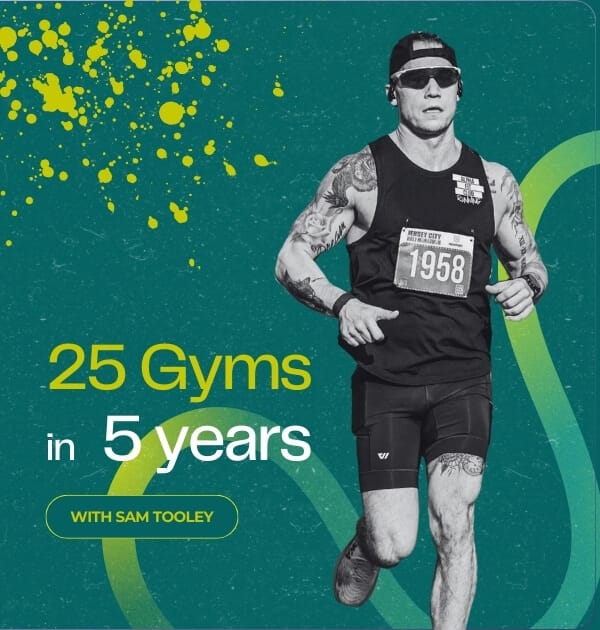So you can sell thousands of memberships…
What’s up Gym World?
Last week, I attended the Business for Unicorns retreat and watched my boy Mateo Lopez speak about lead nurture. There, I met Emily Strasfeld, the head of sales at Mark Fisher’s.
💡 For the unacquainted, Mark’s gym is a strange and wildly successful place. John Romaniello told me it’s “the most profitable gym per square foot on the planet.”
During her tenure, Emily sold thousands of members and millions of dollars in memberships.
She gave a talk on handling objections in a non-slimy way—which I immediately made her repeat on Gym World, so you could learn all her selling secrets.
As a gym owner, you usually get one of these three objections:
- I need to think about it
- I need to talk with my partner
- It’s too expensive
At which point, most people just say, “Okay!” and let a perfectly good prospect walk out the door, never hearing from them again.
Sound familiar?
Luckily, you’re about to learn how to handle any objection in a way that makes your prospect feel comfortable.
Here’s Emily’s 3-step process:
Step 1: Acknowledge and validate
Everyone wants to feel seen and heard. Emily suggests that when a prospect is hesitant, make sure they know you understand.
Here’s how she’d approach each objection:
“I need to think about it”
Response: “I get that, [prospect’s name]. Taking time to make these decisions is important.”
💡 Emily might add, “I also like to marinate on things before I jump into something.” This makes the conversation feel more personal and shows the prospect that you understand their perspective.
“I need to talk with my partner”
Response: “It’s great to have a supportive partner. I totally get it – my partner would want to be in the loop if I were making a similar decision.”
💡 This response makes the prospect feel their concern is both normal and reasonable.
“It’s too expensive”
Response: “I really appreciate your honesty, [prospect’s name]. It can be uncomfortable to talk about money, and it means a lot that you’re open with me about your concerns.
💡 Empathizing with the prospect’s financial concerns helps build trust and rapport, making them feel more comfortable and valued in the conversation.
After acknowledging their objection, it’s time to get more personal.
Step 2: Get curious
Emily likes to ask probing questions to gain deeper insights. This helps her figure out the reasons behind an objection while getting to know the prospect better.
💡 The most common objection often relates to cost.
She keeps the conversation going with a question like:
Question: “I’m curious, do you think there’s even a 1% chance you might join [gym’s name]?”
💡 This question gauges the prospect’s interest and commitment to signing up.
Then, Emily digs deeper based on the prospect’s objection:
“I need to think about it”
Question: “What haven’t we discussed that you’re still thinking about?”
💡 This opens the door for the prospect to voice any concerns. Emily can then address these issues and give reassurance.
“I need to talk with my partner”
Asking non-intrusive questions about the partner can help you understand their involvement in the decision-making process. For example:
- “What’s your partner’s name?”
- “How long have you been together?”
- “Does [partner’s name] know you’re here right now?”
- “Have you talked to [partner’s name] about wanting to start fitness?”
- “How do you think [partner’s name] will react when you start?”
💡 By asking these, you also build a more personal connection with the prospect.
“It’s too expensive”
There are different reasons why someone may find your gym pricey, so asking a range of questions to get the full picture is helpful. Try these:
- “So, it’s the price that’s holding you back?”
- “What price point are you comparing this to?”
- “We’ve talked about your goals, and I understand investing in yourself like this is new. Does it feel scary to spend this kind of money on yourself?”
💡 The first question confirms the main issue. The second helps you understand their expectations regarding cost. The third acknowledges and validates their feelings about making such an investment, all in a way that's empathetic and not confrontational.
Then, you can close the deal.
Step 3: Have a kick-ass offer
Pete Dupuis says that the competition isn’t other gyms, but rather, the prospect’s indecision. Your goal is to help them make a decision and take action. To do that, they need a little push.
According to Emily, this starts with an offer they can’t resist, one that’s:
- Highly attractive
- Irresistible
- Time-sensitive
💡 MFF offers 50% off the first membership payment, but it’s only valid on the day of the sales call. They also add a 30-day money back guarantee to reverse the risk.
Here’s what that looks like:
“I need to think about it”
Response: “We discussed that offer earlier, but it’s only available if you sign up today. I understand you might need more time to think. So, here’s what we can do: let’s get you signed up now, but we won’t start your membership until a week from today.”
💡 The prospect gets the best price and some extra time to decide, while Emily secures their billing info.
And as a final nudge, Emily might end the chat with:
Response: “If you feel it’s not the right fit after you’ve thought about it, just let me know. But truthfully, taking this step could be the best decision for you.”
“I need to talk with my partner”
Response: “That’s completely understandable. Why don’t we sign you up today, but set the start date for a week from now? This way, you have time to discuss it with [partner’s name] and still get our offer.”
💡 This approach provides the flexibility that the prospect is looking for while taking away the pressure from making a decision.
“It’s too expensive”
Response: “I hear your concern about the price, and I really want to help you start your fitness journey. Let’s see what we can do together. How about that offer we discussed earlier? Would that make the price more comfortable for you?”
💡 Emily then explains two possibilities: Best case: The prospect pays half the price, falls in love with the gym, and finds their forever fitness home. Worst case: It doesn’t work out, but they have 30 days to get their money back, so they lose nothing.
The prospect will either agree or still find the price too high. If they’re hesitant, Emily gives them a few alternatives:
- Down-sell to a cheaper membership
- Offer free resources as a bonus
- Highlight other perks of the membership
This is a non-slimy way to help them make a decision. It gets them closer to reaching their goals and yours too.
To catch Emily and Mateo role-playing these objections, watch or listen to the latest Gym World.
peace and love,
j






